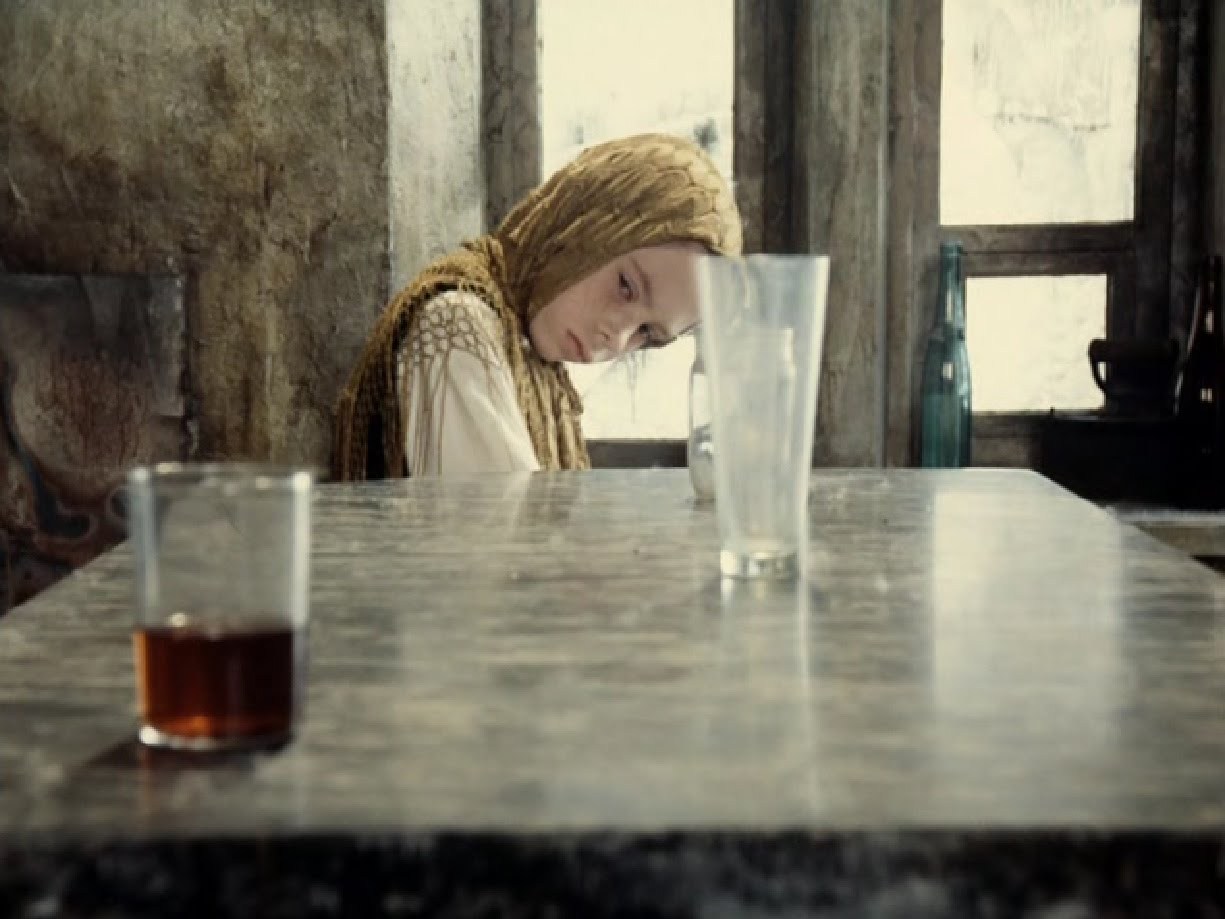
How I love your eyes, my friend,
With their radiant play of fire,
When you lift them fleetingly
And like lightning in the skies
Your gaze sweeps swiftly round.
But there is charm more powerful still
In eyes downward cast
For the moment of a passionate kiss,
When through lowered eyelids glows
The sombre, dull flame of desire.
Fyodor Tyuchev’s poem ‘The Dull Flame of Desire’ that the stalker’s child recites
“By any standards it's a slow start to a movie. Officials from Goskino, the central government agency for film production in the USSR, complained about this, hoping the film could be ‘a little more dynamic, especially at the start.’ Tarkovsky erupted:
‘The film actually needed to be slower and duller at the start so that everyone who had walked into the wrong theatre would have time to leave before the action got under way.’
The film often makes us wonder about when and where it is set, and what its relationship is to the world beyond the screen. Stalker was made in the late 1970s, not the 1930s or the 1950s when the Soviet Union was a vast prison camp, when, in prison-camp slang (as Anne Applebaum points out in Gulag), ‘the world outside the barbed wire was not referred to as ‘freedom’, but as the bolshaya zona, the ‘big prison zone’, larger and less deadly than the ‘small zone’ of the camp, but no more human – and certainly no more humane.’ By the time of Stalker, communism had become, in Tony Judt’s words, ‘a way of life to be endured’. Stalker is not a film about the Gulag, but the absent and unmentioned Gulag is constantly suggested, either by Stalker’s zek haircut, or by the overlapping vocabulary. As we will discover, the most perilous part of the Zone (zona) is the so-called ‘meat grinder’, another prisoners’ term for the procedures of ‘the Soviet repressive system itself. [...] Stalker is seeking asylum from the world. The irony, as Chris Marker points out in One Day in the Life of Andrei Arsenevich, his homage to Tarkovsky, is that asylum and freedom lie behind the barbed wire, in the Zone.
Preparing a later shot, when Writer rejects Stalker’s warning and starts walking straight towards the Room, Tarkovsky noticed that a few dandelions had blossomed – if that’s what dandelions do – thereby spoiling the look of the scene. Production designer Rashit Safiullin and his team were sent to pluck them out. A simple enough task, except the Zone also had to look like no one had ever set foot there, so they needed to make sure that in the process of plucking the dandelions they left no sign of their own work, no flattened grass or footprints. The dandelions had hardly been obtrusive but even when they were removed so that shooting could begin Tarkovsky was not happy:
‘Rashit, the flowers are not here but their presence can be felt.'
‘Up the river was a chemical plant and it poured poisonous liquids downstream,’ recalls Vladimir Sharun, sound recordist on the set. This caused numerous allergic reactions among the cast and crew and, Sharun believes, ultimately caused the deaths from cancer of Tarkovsky, his wife Larissa, and Solonitsyn.1
“People have often asked me what the Zone is, and what it symbolises, and have put forward wild conjectures on the subject. I'm reduced to a state of fury and despair by such questions. The Zone doesn't symbolise anything, any more than anything else does in my films: the zone is a zone, it's life, and as he makes his way across it a man may break down or he may come through. Whether he comes through or not depends on his own self-respect, and his capacity to distinguish between what matters and what is merely passing.”
Andrei Tarkovsky2

